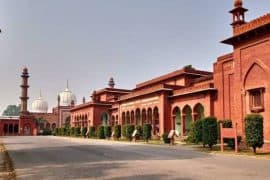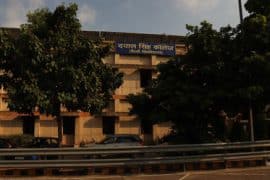The Delhi University Students Union election inch closer, after a three-year long hiatus, amidst bouts of violence, forced entry in colleges and aggressive campaigning, certain issues like the lack of women’s representation seem to have lasted the stop-gap. There still only seems to be two women’s colleges even part of the election process, one being Miranda College. Moreover, even after elections, women do not seem to occupy high roles, and are known for being “dummies” for other male candidates. This article aims to look at the larger narrative behind women and student politics, how it has evolved and what it means for national politics.
The evolution of student politics can be traced to the pre-independence, wherein most mass student mobilizations were to protest against the introduction of the English language as a medium of instruction in universities across India. Eventually, student unions merged with the larger independence movement. However, the use of violence in campus politics has been a pervasive issue since its inception as it was often the only way to express their grievances, in what was a political system which frequently ignored the needs of the youth.
For the illiterate and the literate without any contacts, a quick of venting anger and grievances was to resort to violence (Arnon & Altbach 1973: 164)”
Due to the nationalization of campus politics and the flow of funding from national parties, the two stages – the campus and the nation have become reflective of one another, wherein the factionalism on the lines of caste, class and gender in national politics can be seen in student politics as well, due to the monetary links formed between the two. This too often leads to violent outbursts.
It is no surprise that the transference of women’s underrepresentation can also be seen in campus politics, given the lack of female representatives on the national level as well. In the coming elections, most women’s colleges won’t be represented as they’re not a part of the student union. This is an issue that extends beyond Delhi University, with several state colleges facing the same issue. The women’s wing of Arunachal Pradesh’s student union claims that parental and social pressure plays a part, many afraid of the dangers of campus politics, which are notoriously violent. This institutionalization of force in student politics, which is traditionally associated with masculinity, is also an ideological barrier which dissuades women from even trying to make it to higher positions within the union. Similarly, in Panjab University, party vice-presidents raise the same grievances, stressing on the lack of importance given to female candidates despite the presence of women’s wings, which are mostly tokenistic. They also highlight how this lack of representation is detrimental to women’s causes within campuses, like creating safe spaces, provision of feminine hygiene products etc.
Moreover, since visibility creates such a big part in campus elections, the lack of women being present during campaigns is also detrimental to their cause. Given the proximity of the student elections, and more so India’s national elections, it is important to note how such issues of underrepresentation are magnified as we move up the administrative ladder. If we cannot adequately represent women’s issues within the student body, how can we do so on a national scale?
Read also. https://dubeat.com/2023/07/23/women-in-politics-or-the-lack-thereof/
Image credit. Deves
Chaharika Uppal





Comments are closed.